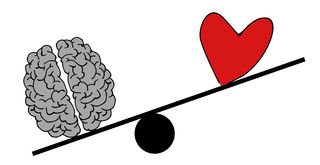Health
3 Ways That Pseudoscientific Therapies Can Be Harmful
The best philosophy to protect against harm is a scientific one.
Posted January 22, 2020 Reviewed by Devon Frye
The treatment of mental health disorders is a serious enterprise. It is not to be taken lightly. And yet, non-evidence-based mental health treatments are frequently recommended and used. It is not uncommon for psychologists to regularly encounter patients who have received such therapies to address their mental health concerns, which can include: homeopathy, herbal medicine, chiropractic, acupuncture, energy healing, and others.
It might be asked, “So what? What’s the big deal? At worst, these therapies are inert or innocuous, and nothing bad can happen.”
These assumptions are false. In fact, pseudoscientific therapies can potentially be harmful for 3 major reasons, as thoroughly delineated by Scott O. Lilienfeld and his colleagues in Science and Pseudoscience in Clinical Psychology.
It is first worth mentioning, however, that the difference between science and pseudoscience can sometimes itself be a difficult endeavor. As Lilienfeld has articulated, science probably differs from pseudoscience in degree rather than in kind—but the distinction is like the boundary between day and night: the fact that the precise boundary is unclear does not imply that the two cannot be meaningfully differentiated.

1. Pseudoscientific therapies can directly produce harm.
First, the techniques and beliefs propagated by some pseudoscientific therapies can produce harm per se. One of the most famous tragic cases of such harm involved the death of Candace Newmaker, a 10-year-old girl who died during a 70-minute session of Rebirthing Therapy, whereby she was wrapped from head to toe and surrounded by pillows in an attempt to treat reactive attachment disorder. Lilienfeld and colleagues also allude to other negative consequences that can derive from more subtle techniques that are based on contentious theory, such as hypnosis to unearth purportedly repressed memories of childhood trauma, critical incident stress debriefing, and peer group interventions for adolescents with conduct disorders that might unintentionally contribute to problematic behaviors via peer contagion.
2. Pseudoscientific therapies can indirectly deprive time and financial resources from supported treatments.
Second, and more commonly, perhaps the biggest potential contributor of harm from pseudoscientific therapies is that their promotion can indirectly deter treatment-seeking from already established evidence-based therapies. For someone that is experiencing a mental health disorder—such as an anxiety disorder, a depressive disorder, or an addictive disorder—it is more effective (at both the individual and public policy levels) to spend time, money, and effort on therapies that are most likely to be beneficial. When it comes to mental health disorders, the potential negative consequences of not seeking evidence-based treatments can mean continued suffering and even, in some cases, death.
For example, it is not uncommon to hear about the use of “natural remedies” or over-the-counter supplements for the treatment of obsessive-compulsive disorder (OCD). But the first-line evidence-based treatment for OCD is exposure and response prevention (ERP) and large amounts of research have found that it is the treatment that should be promoted and sought.
Similarly, a potentially deadly application of an unsupported therapy for opioid addiction is the use of nutrient-based therapies, such as vitamin C, if these therapies are used in lieu of first-line opioid agonist therapy (OAT). Indeed, in the midst of an overdose crisis in North America, the professional mismanagement of opioid addiction can be life-threatening.
And the list goes on: First-line evidence-based treatment for schizophrenia is antipsychotic medication, not solely diet management; it is stimulant medication for attention-deficit hyperactivity disorder (ADHD), not chiropractics; it is cognitive-behavioural therapy (CBT) for depressive disorders, not Reiki; and it is prolonged exposure and cognitive processing therapy for posttraumatic stress disorder (PTSD), not Past Life Regression Therapy.
3. Pseudoscientific therapies can further erode the foundations and trust in scientific professions that employ their use.
Lastly, and at the most philosophical level of analysis, the promotion and use of pseudoscientific therapies risk the erosion of the scientific foundations and trust in professions that embrace such therapies. In the case of mental health disorders, this includes the discipline of clinical psychology, which is predicated on an empirical, scientific tradition. Indeed, the ethical practice of clinical psychology per se requires that clinicians base their practice upon established scientific and professional knowledge, not postmodern philosophical positions that seek to undermine the validity of knowledge itself.
People who experience mental health disorders deserve the best available treatment. As they say, “the path to hell is paved with good intentions.” It is undoubtedly the case that many practitioners who offer pseudoscientific treatments are not malicious in their intent. But the reason that mental health professionals are trained so rigorously is to protect against harm. And the best philosophy to protect against harm is a scientific one.




